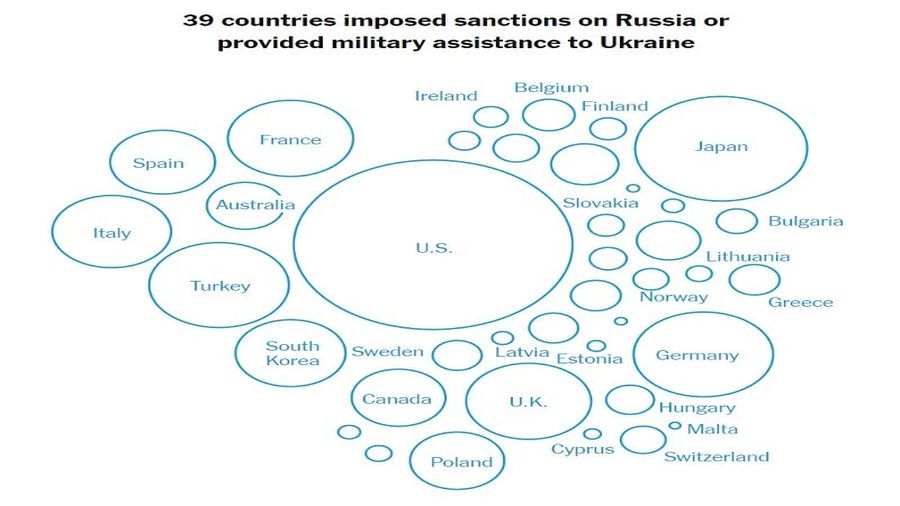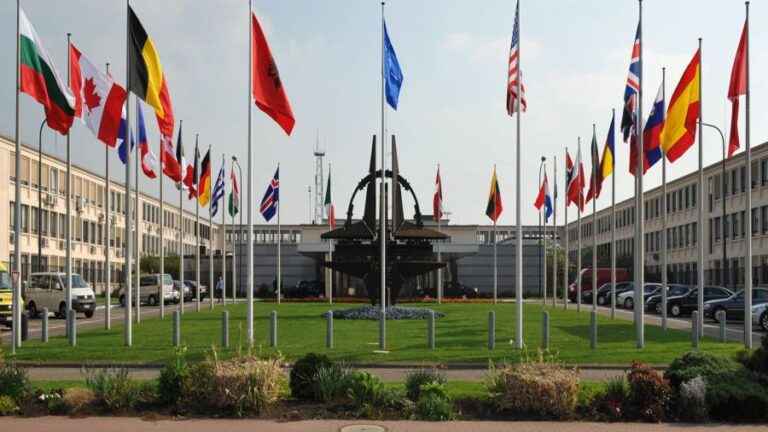The New York Times Admitted That the West Failed to Isolate Russia
The continued inability of most observers to acknowledge this true cause behind the failure of the West’s efforts to isolate Russia will leave them struggling to understand the complex strategic dynamics that are presently unfolding at this crucial point in the global systemic transition. They risk being caught off guard by that which might soon come to pass, specifically the increasingly intense destabilization campaign that the West’s liberal-globalist elite is gearing up to wage against India.
Fresh from admitting that the West’s sanctions against Russia failed, the New York Times (NYT) just dropped another truth bomb by also admitting that this de facto New Cold War bloc failed to isolate Russia. Their long-form article on this topic includes plenty of graphics that clearly illustrate the following “politically inconvenient” facts: 1) Russia successfully replaced its lost Western imports; 2) only 39 countries have armed Kiev and/or sanctioned Moscow; and 3) there’s a growing trend of neutrality.
These observations prove that the vast majority of humanity doesn’t regard the Ukrainian Conflict as an existential struggle between good and evil or between democracies and autocracies like the US-led West’s Golden Billion has tried to spin it, but as a proxy war between Russia and NATO. This crucial difference of outlook explains why they’re not willing to unilaterally concede on their objective national interests as part of the collective sacrifices demanded of them by the declining unipolar hegemon.
Not only was this disadvantageous to the US’ grand strategic interests for obvious reasons, which includes showing the world the very real limits of its influence, but this development also inspired them to seriously explore ways for comprehensively expanding South-South cooperation. As it turned out, India led the way in this respect after becoming the largest developing country to successfully defy the US while still retaining pragmatic ties with it, which coincided with its G20 chairmanship for this year.
Delhi intends to use this platform to promote the interests of its developmental peers, ergo the virtual Voice Of Global South Summit that it hosted in mid-January. India’s rapid rise as a globally significant Great Power brought about by its pragmatic policy of principled neutrality towards the Ukrainian Conflict in particular and the New Cold War in general serves as an example for others to follow. The cumulative effect of this emerging trend is the strategic consolidation of the entire Global South.
Unlike during the Old Cold War where the Non-Aligned Movement (NAM) was largely instrumentalized by the superpowers as part of their worldwide competition with each other, this time the new Non-Aligned Movement (“Neo-NAM”) that India is attempting to informally assemble in the New Cold War stands to be truly independent. The reason why this remixed network is expected to function differently than its predecessor is because of how much International Relations has changed over the decades.
The global systemic transition to more complex multipolarity (“multiplexity”) is in full swing after India’s rapid rise as a globally significant Great Power over the past year made this irreversible. The US is no longer the hyperpower that it was immediately after the Old Cold War, while the Sino-American bi-multipolar superpower duopoly that hitherto characterized International Relations up until the eve of Russia’s special operation is fading as a result of everything that transpired across the world since then.
It’s this structural-systemic development that’s most responsible for the Golden Billion’s failure to isolate Russia since its absence would have led to this de facto New Cold War bloc’s “containment” policies being incomparably more successful had the Global South surrendered its interests to the US. Truth be told, the trend towards more multiplexity far precedes the events of the past year but was unprecedentedly accelerated by them and powerfully catalyzed by India’s independent example.
The continued inability of most observers to acknowledge this true cause behind the failure of the West’s efforts to isolate Russia will leave them struggling to understand the complex strategic dynamics that are presently unfolding at this crucial point in the global systemic transition. They risk being caught off guard by that which might soon come to pass, specifically the increasingly intense destabilization campaign that the West’s liberal-globalist elite is gearing up to wage against India.
It’s not for nothing that Color Revolution mastermind George Soros just de facto declared Hybrid War on India during his speech at mid-February’s Munich Security Conference. He and his ilk want to punish it for ruining their grand strategic plot to isolate Russia, ergo the escalating information and economic warfare campaigns that they’ve begun waging against that Great Power since the start of this year. The more pragmatic of their peers want to cooperate with India, but radicals like Soros want to destroy it.
India isn’t just the voice of the Global South nor its emerging leader, but nowadays functions as the geostrategic fulcrum of the developing world due to everything that it’s impressively achieved over the past year. The Western liberal-globalists’ impending Hybrid War destabilization campaign against it can therefore be conceptualized as a major power play second in global significance only to the Ukrainian Conflict that they themselves provoked in the first place.
Russia and India are both targeted for “Balkanization”, but they’re extremely resilient and have the socio-political cohesion to hold their own in the face of these Hybrid War threats. The Golden Billion’s failure to isolate Russia is largely due to the Indian-inspired Global South’s defiance of that New Cold War bloc’s demands of them, hence why Soros and others are preparing to destabilize India in the hopes that doing so will then destabilize Russia and thus enable the West regain control of the world.







